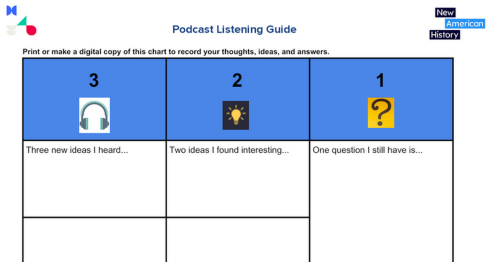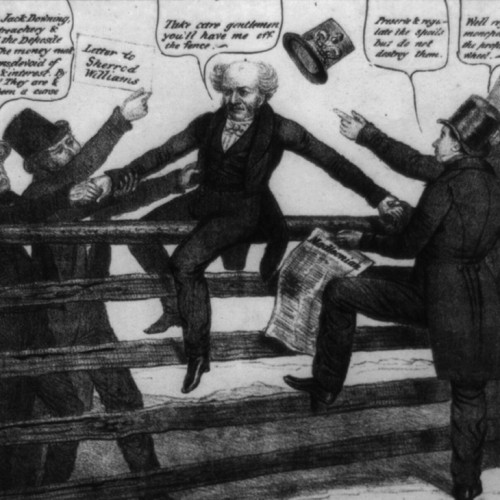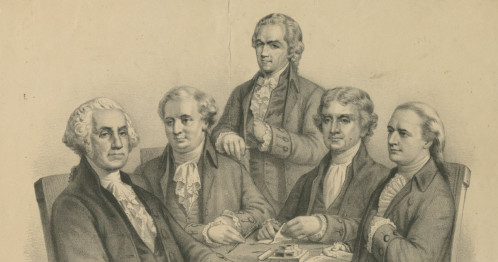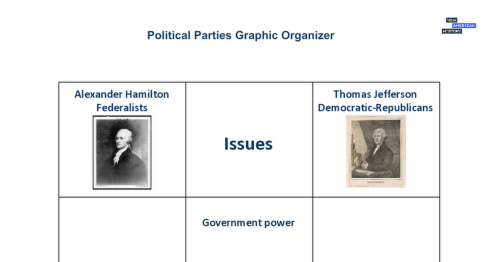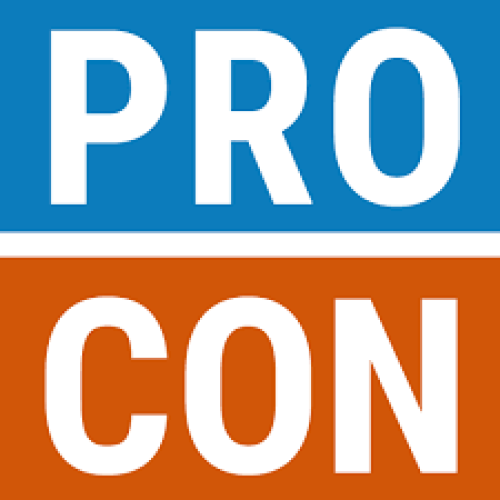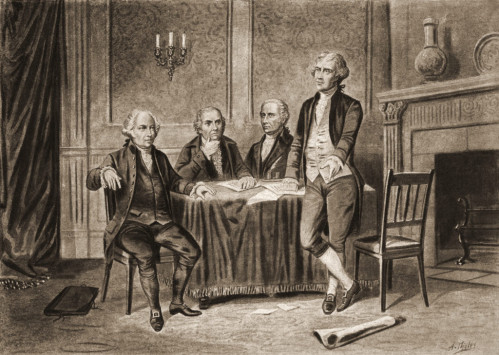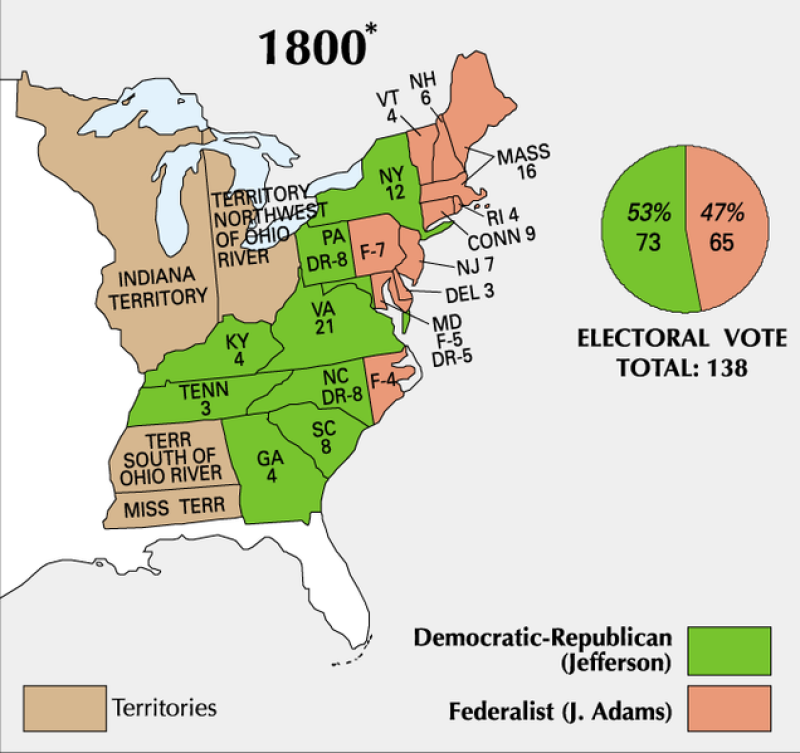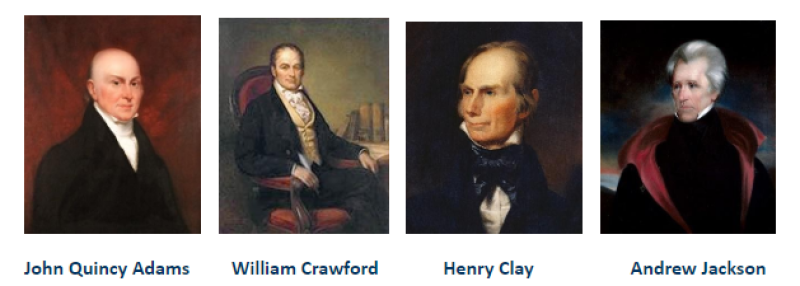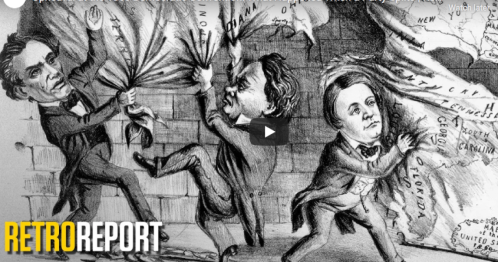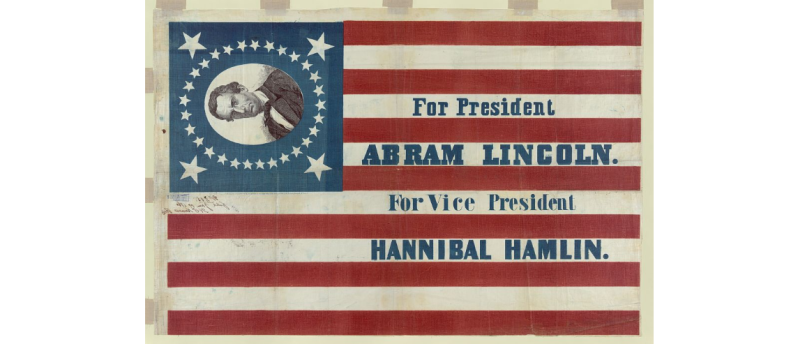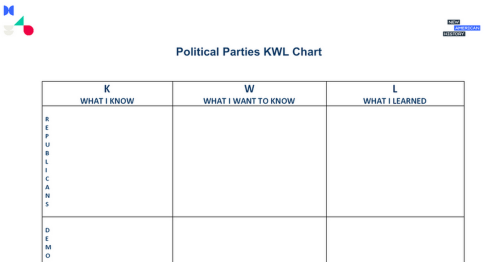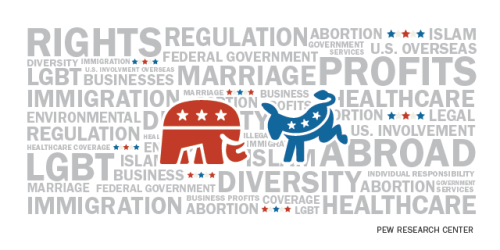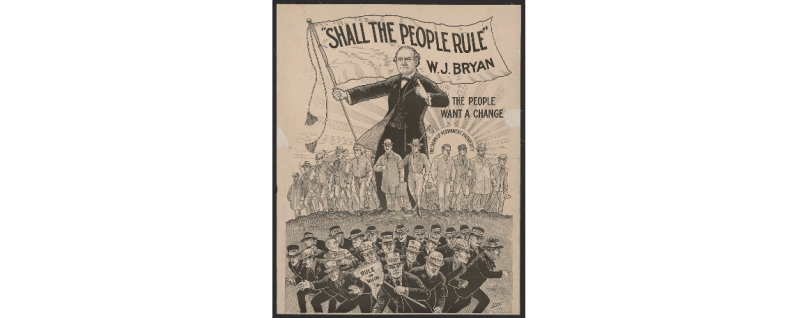This work by New American History is licensed under a Attribution-NonCommercial-ShareAlike 4.0 (CC BY-NC-SA 4.0) International License. Permissions beyond the scope of this license may be available at newamericanhistory.org.
Agents of Influence: The Development of Political Parties
View Student Version
Standards
C3 Framework:D2.Civ.5.9-12. Evaluate citizens’ and institutions’ effectiveness in addressing social and political problems at the local, state, tribal, national, and/or international level.D2.His.4.9-12. Analyze complex and interacting factors that influenced the perspectives of people during different historical erasD4.7.9-12. Assess options for individual and collective action to address local, regional, and global problems by engaging in self-reflection, strategy identification, and complex causal reasoning.
National Council for Social Studies:Theme: Individuals, Groups, and InstitutionsTheme: Power, Authority, and GovernanceTheme: Civic Ideals and Practices
National Geography Standards: Standard 1 - How to use maps and other geographic representations, tools, and technologies to acquire, process, and report information from a spatial perspective.
Teacher Tip: Think about what students should be able to KNOW, UNDERSTAND, and DO at the conclusion of this learning experience. A brief exit pass or other formative assessment may be used to assess student understandings. Setting specific learning targets for the appropriate grade level and content area will increase student success. If students are working remotely, you may provide them with opportunities to collaborate with their classmates using video conferencing, access to an online chat feature, or breakout rooms.
Suggested Grade Levels: High School
Suggested Grade Levels: High School
Suggested Timeframe: 3 class sessions, 30-45 minute class periods
Suggested Materials: Internet access via laptop, tablet or mobile device; projector and screen for viewing video segments as a whole group if providing face to face instruction.
Key Vocabulary
Contentious - causing or likely to cause an argument; controversial
Convention - a meeting held by a political party to vote on its platform and candidates
Dissidents - someone who challenges or disagrees with the accepted policy
Faction - a smaller political group that promotes its own ideas separate from the larger group in which it belongs
Fasting - voluntarily avoiding food for spiritual or religious reasons
Mudslinging - using accusations and insults to damage the reputation of a political opponent
Partisan - someone who is loyal to a political party
Philanthropic - a charitable person or organization that serves or benefits others
Platform - a formal and detailed list of views held by a political party
Polarization - the sharp division of people based on their differing views; an example of political polarization is extreme conservative and liberal views
Politico - a politician or person with strong political views
Rivalry - competition between people or groups who are seeking the same goal
Rump convention - a meeting held after the formal party convention is adjourned
Stratification - dividing or classifying people into different social groups based on income, race, education, or other factors
Third party - an alternate political party that is separate from the two-party system
Read for Understanding
Teacher Tips:
This Learning Resource includes language in the body of the text to help adapt to a variety of educational settings, including remote learning environments, face-to-face instruction, and blended learning.
If you are teaching remotely, consider using videoconferencing to provide opportunities for students to work in partners or small groups. Digital tools such as Google Docs or Google Slides may also be used for collaboration. Rewordify helps make a complex text more accessible for those reading at a lower Lexile level while still providing a greater depth of knowledge.
In the Engage section of the lesson, some additional terms that students might identify as a result of the Backstory podcast are faction, vote, population, politicians, representative, and conflict. Use of the 321 strategy and the Podcast Listening Guide are suggested to help students organize their thoughts before, during and after they listen to a podcast. You may provide digital or paper copies as needed. Students may also wish to work collaboratively with a partner, or if working remotely, via a collaborative document or tool to create a Word Cloud using terms they brainstorm or choose from the BackStory podcast listening activity.
Our Extend activity encourages students to take action and consider volunteering to support a cause or candidate they believe would have a positive impact on their communities. We caution students never to give out personal information and to ALWAYS seek permission from a teacher, parent or responsible family member before contacting any organization and before volunteering.
These Learning Resources follow a variation of the 5Es instructional model, and each section may be taught as a separate learning experience, or as part of a sequence of learning experiences. We provide each of our Learning Resources in multiple formats, including web-based and as an editable Google Doc for educators to teach and adapt selected learning experiences as they best suit the needs of your students and local curriculum. You may also wish to embed or remix them into a playlist for students working remotely or independently.
For Students:
Many people talk about what political party they follow, but what is a political party’s purpose? This lesson looks at how the earliest political parties were created and what their views were. This includes a look at the election of 1800 - often referred to as a “revolution”. Finally, we look at how today’s political parties developed and how individuals and groups can create or impact political parties.
Engage:
What is the purpose of political parties?
- What comes to mind when you hear the term political parties?
- Which political parties are you already familiar with, or know by name?
Use the Podcast Listening Guide provided by your teacher to help you organize your thinking before, during and after you listen to this podcast.
In two minutes, list as many key words you already know to describe political parties – focus on key concepts, elements, and examples. You may record your answers on the back of the chart or, if working remotely or using a digital copy, type them in the space below the chart.
Listen to The Spirit of Party and Faction segment of the Backstory episode, "Splintered Parties."
Turn and talk to an elbow partner. Compare your terms and summary sentence.
- Do you see any similarities or differences.?
- Which words were most used by both you and your partner?
- What unique words did you learn from your partner?
If you have access to technology, you may want to combine your terms with a small group of classmates to create a word cloud. You may choose to add additional terms from the transcript of the BackStory segment you listened to, or if working remotely, you may create your own word cloud and share using a collaborative space such as Google Docs or Google Slides as directed by your teacher.
- What word or words appear most frequently? (Hint: the larger the word, the more it appears in the text).
- Why do you think those particular words are emphasized?
- Are there other words you thought would be used more frequently?
- What new words might you add to help your classmates learn more about early political parties?
If you are age 14 or older, and your teacher, parent or guardian gives you permission, you could share an image of your word cloud via social media. The team here @newamericanhist would love to see some examples, so tag us and use #agentsofchange — we look forward to seeing how creative your can be!
Your teacher may ask you to record your answers on an exit ticket.
Explore:
Why were the earliest political parties created and what were their views?
President George Washington strongly discouraged the formation of political parties. However, his cabinet members, Secretary of State Thomas Jefferson and Secretary of Treasury Alexander Hamilton, disagreed on so many core issues, leading to the formation of the first political parties. Hamilton founded the Federalist party and Jefferson founded the Democratic-Republican party.
Read the following article in Bunk - How the Rivalry Between Thomas Jefferson and Alexander Hamilton Changed History.
Take a few minutes to explore some of the other excerpts connected to this one by selecting the View Connections button. Select one connection you found most interesting. Use the Share connection button at the bottom of the screen to capture and share the link with your teacher, or classmates as directed. You might use a collaborative doc or slides such as Google Docs or Google Slides if working remotely.
As you read, sort the following political stands into the Political Parties Graphic Organizer to show the views of Alexander Hamilton and Thomas Jefferson.
- Strong central government
- Strong state governments
- Pro-French
- Pro-British
- Urban, cities
- Rural, farming
- Agriculture
- Manufacturing
Reflect on the information in your chart:
- Which party do you think was more beneficial to the United States as it was establishing its government?
- Why?
- How does this compare to the function of political parties today?
Hamilton and Jefferson didn't have the advantage of having a Smartphone with social media or apps to help them access and share information instantly. The folks at PRO/CON make it easy for modern day politicos to gain access to information about a wide variety of current events and social issues. Take a few minutes to explore a topic of your choice on their site. Then search for a few from your Political Parties Graphic Organizer.
- What topics are you most interested in exploring further?
- What new information do you see on the topics you researched earlier when you were comparing Hamilton and Jefferson's points of view?
- Is the information on the site presenting the topic from multiple viewpoints?
Turn and talk to a partner, or if working remotely, your teacher may allow you to use the chat feature in a video conference, or a collaborative tool such as Google Docs or Google Slides. Share one topic you explored on the PRO/CON site and share which view you each think might be most closely aligned to those of Hamilton or Jefferson. Use evidence from your previous explorations on Bunk and your Political Parties Graphic Organizer to back up your claim.
Your teacher may ask you to share your graphic organizer or record your answers on an exit ticket.
Explain:
Why is the election of 1800 often referred to as a “revolution”?
The presidential campaign of 1800 featured two Founding Fathers competing for the top office. President John Adams ran for re-election against Vice President Thomas Jefferson. Though the men had been friends in the past, they now held very different political views. Adams represented Federalist interests while Jefferson was a Democratic-Republican. As a result, the campaign was very contentious.
The 1800 election brought the first significant use of partisan mudslinging, the use of accusations and insults to damage the reputation of a political opponent. Read this short blog post from PBS Newshour to learn about the actions of Adams and Jefferson in this election campaign and reflect on the following questions:
- What role did religion have in the campaign of 1800?
- What were some accusations made against John Adams?
- What were some accusations made against Thomas Jefferson?
Another issue with the election of 1800 was a tie in the Electoral College between the candidates. Surprisingly, the tie was not between Adams and Jefferson, but between Jefferson and Aaron Burr, his vice presidential running mate. One result of this tie was the ratification of the 12th Amendment in 1804 which required each party to designate presidential and vice presidential candidates who would run as a team in the election. Watch this short video to determine how the election of 1800 was decided.
Reflect on the following questions:
- What role did the House of Representatives play in deciding the election?
- What did Alexander Hamilton suggest should decide the election?
On the map below examine the mapped results of the election of 1800 and answer the following questions:
- What geographic differences do you notice between the candidates
- How does this connect to the differences in the party views
- Thinking ahead, what changes in party support do you predict as the country moves through the 1800s?
Even with all of these developments, the main reason historians refer to this election as the “Revolution of 1800” was the peaceful transfer of leadership from Adams’ Federalists to Jefferson’s Democratic-Republicans.
In his inaugural address in 1801, Jefferson made clear his intention to bring the country together by reminding Americans that “every difference of opinion is not a difference of principle. We have called by different names brethren of the same principle. We are all Republicans, we are all Federalists.”
- What three elements contributed to the “Revolution of 1800”?
- Which of these elements do you consider the most important?
Your teacher may ask you to record your answers on an exit ticket.
Elaborate:
What developments led to the formation of modern political parties?
The Democratic Party
In the 1824 election, with the fading of the Federalists, the United States had four presidential candidates all from the Democratic-Republican Party.
View the Political Parties: The Election of 1824 slides to explore the results of this controversial election.
As you view the slides, think about the following:
- Who won the popular vote?
- Who had the most electoral votes?
- What geographic trends do you see?
The Republican Party
The Republican Party was founded in 1854 as a response to the political conflict surrounding slavery in the territories. Read this short excerpt from Bunk and watch the short video from RetroReport on how the issue of slavery impacted both the Republican and Democratic parties as the 1860 election approached.
As you watch the video, think about the following:
- What was the short-term impact of the split in the Democratic Party in 1860?
- What are the long-term consequences of party division?
- What evidence do we see of partisan politics as it relates to issues of race and identity today?
- What did you find interesting or surprising as you explored the connections to the video in Bunk?
Although these two main political parties are more than 150 years old, they have gone through many philosophical changes over the years. Sometimes a political party is known more by reputation or a captivating leader than by their actual values and goals. Let’s explore the current political parties more deeply.
- Using the Political Parties KWL Chart, complete the boxes in the first column, under the K, explaining what you already KNOW about the Republican and Democratic parties.
- Next complete the boxes in the second column, under the W, explaining what you WANT to know about the parties. You may bullet topics or ask your own questions.
In order to gain the support of like-minded voters, parties create a written platform that lists its stand on issues. To learn about the views of the Republican and Democratic parties, investigate their platforms from the most recent election. Complete the third column, under the L , on the chart as you discover new information about the modern political parties to share what you LEARN.
Finally, answer the questions in this poll to determine which modern party is most aligned with your views and add additional information to the third column under LEARN on your KWL chart as needed.
Turn and talk with your partner about information about the parties that surprised you or even something that you learned about your own political views. If working remotely, your teacher may provide opportunities to collaborate with classmates using video conferencing, access to an online chat feature, or breakout rooms.
Your teacher may ask you to share your Political Parties KWL Chart or record your answers on an exit ticket.
Extend:
How can individuals and groups create or impact political parties?
Sometimes Americans find that the two dominant political parties do not fully represent their views so they create alternate parties, often referred to as third parties. The Populist Party, created in the 1890s, sought to address the economic and political needs of farmers and workers. As represented in the poster above, William Jennings Bryan was their presidential candidate in 1896. In an effort to win back the White House in 1912, former President Theodore Roosevelt created the Progressive Party that pushed for economic, social, and political reforms to benefit industrial workers, farmers, and women.
Now you have a chance to create your own party.
- What issues do you want represented by this party?
- What actions do you want your party to take?
Consider the following topics, as well as others that concern you:
- Education
- Health care
- Civil rights
- Economy and jobs
- Immigration
- Trade
- Gun policy
- National security
- Environment
- Technology
- Electoral reform
- Criminal justice
Create a poster that represents the key elements of your political party making the following clear:
- The name of your party
- Images and words to represent your party’s stand on key issues
- A catchy slogan that draws voters to your cause
You can use the William Jennings Bryan campaign poster from 1908 as an inspiration. Your poster may be hand drawn, or if you have access to digital tools you may create your poster using Google Slides, Google Docs, or another app as directed by your teacher.
Want to get involved in the political process? You can volunteer for local or national candidates, you can get involved in a cause that is important to you, or you can encourage others to register to vote. These websites or organizations might be helpful—always check with your teacher, and your parents or a responsible family member before contacting any volunteer organization and never give out personal information without an adult’s permission.
Your teacher may ask you to share your poster or record your answers on an exit ticket.
Citations:
Ayers, Ed, Peter Onuf, Brian Balogh, and Joanne Freeman. “Splintered Parties.” BackStory. Virginia Humanities, June 13, 2014. https://www.backstoryradio.org/shows/splintered-parties-4.
Earl, Ralph Eleaser Whiteside. “Andrew Jackson.” Wikimedia Commons, August 1, 2018. https://commons.wikimedia.org/wiki/File:Andrew_jackson_headFXD.jpg.
Electoral College 1800. January 22, 2006. Wikimedia Commons. https://commons.wikimedia.org/wiki/File:ElectoralCollege1800-Large.png.
Electoral College 1824. January 22, 2006. Wikimedia Commons. https://en.wikipedia.org/wiki/1824_United_States_presidential_election#/media/File:ElectoralCollege1824-Large.png.
Ferling, John. “How the Rivalry Between Thomas Jefferson and Alexander Hamilton Changed History.” Bunk History. Time, February 15, 2016. https://www.bunkhistory.org/resources/524.
First Freedom Campaign of 1800. PBS. Public Broadcasting Service, 2012. https://www.pbs.org/video/first-freedom-campaign-1800/.
Hamilton's America: Hamilton and the Election of 1800. PBS LearningMedia. Great Performances, 2020. https://vpm.pbslearningmedia.org/resource/ham16.soc.ushis.election1800/hamiltons-america-hamilton-and-the-election-of-1800/.
Howard, H. C. “For President, Abram Lincoln. For Vice President, Hannibal Hamlin.” The Library of Congress. Accessed July 27, 2020. https://www.loc.gov/resource/pga.01637/.
Jefferson, Thomas. “First Inaugural Address.” Speech, Washington, DC, March 4, 1801. The Avalon Project. Accessed July 27, 2020. https://avalon.law.yale.edu/19th_century/jefinau1.asp
Latimer. “‘Shall the People Rule’, W.J. Bryan, the People Want a Change.” The Library of Congress. Accessed July 27, 2020. https://www.loc.gov/item/2018695409/.
Neagle, John B. “Henry Clay.” Wikimedia Commons, September 24, 2018. https://upload.wikimedia.org/wikipedia/commons/1/13/John_B._Neagle_-_Henry_Clay_-_Google_Art_Project_crop_2.jpg.
Osgood, Charles. “John Quincy Adams.” Wikimedia Commons, July 8, 2019. https://commons.wikimedia.org/wiki/File:John_Quincy_Adams_by_Charles_Osgood.jpg.
Peters, Gerhard, and John T Woolley. “National Political Party Platforms of Parties Receiving Electoral Votes.” The American Presidency Project. University of California Santa Barbara. Accessed July 27, 2020. https://www.presidency.ucsb.edu/documents/presidential-documents-archive-guidebook/national-political-party-platforms.
“Political Party Quiz.” Pew Research Center - U.S. Politics & Policy. Pew Research Center, July 2, 2020. https://www.pewresearch.org/politics/quiz/political-party-quiz/.
“Thomas Jefferson.” The Library of Congress. Accessed July 27, 2020. https://www.loc.gov/item/2003655748/.
Trumbull, John. “Alexander Hamilton.” The Library of Congress. Accessed July 27, 2020. https://www.loc.gov/item/2016816335/.
Upheaval at the 1860 Democratic Convention: What Happened When a Party Split. Retro Report, 2016. https://www.retroreport.org/video/the-split-1860-conventional-wisdom/.
“William Harris Crawford.” Wikimedia Commons, March 5, 2006. https://commons.wikimedia.org/wiki/File:Portrait_of_William_Harris_Crawford.jpg.
View this Learning Resource as a Google Doc



